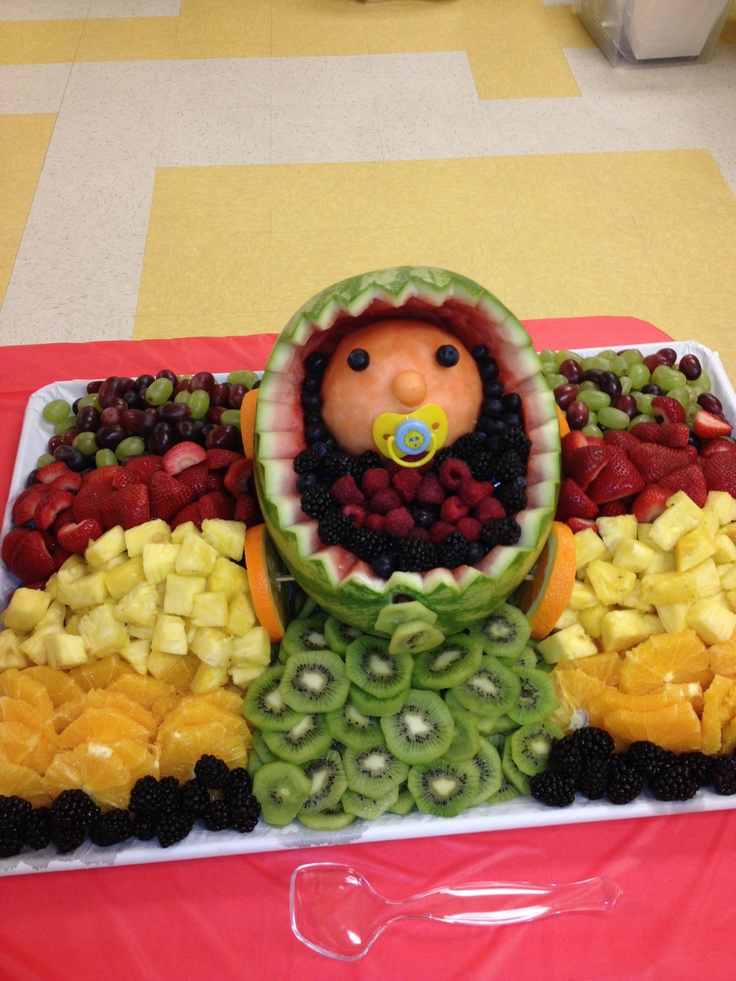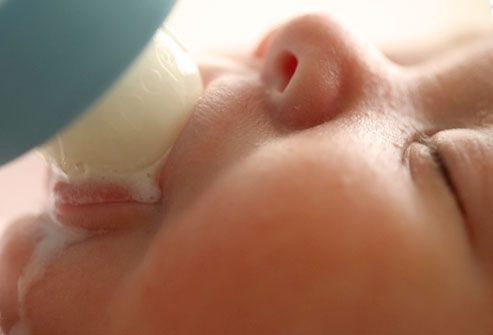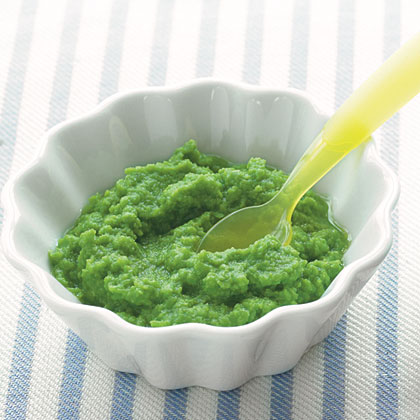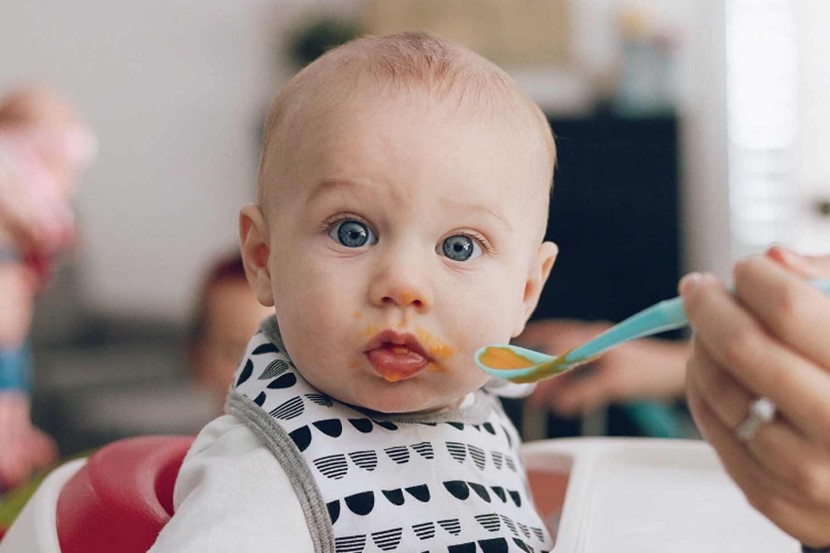Name that baby food
How to Play "Name that Baby Food" Baby Shower Game
Name that baby food is an awesome baby shower game that requires some set-up, but is totally worth it! In this baby shower game, your guests will taste different selections of baby food and try to guess what it is. The person with the most baby food friendly palate wins the game.
Materials
- Jarred Baby Food - 6-12 flavors
- Wastebasket
- Container - where guests can put their completed answer sheets
- Permanent marker / pens / pencils
- Paper to cover the jar labels
- Answer Sheets - these can be blank or pre-numbered so guests will just write their guesses about the flavors that correspond with the number
- Tasting utensils - plastic spoons or popsicle sticks (enough so that guests don't reuse the utensil for each flavor)
Prepping for Name that Baby Food Baby Shower Game
To prepare for this game, you will need to purchase some baby food jars in advance. To keep the game fair and simple, it's best to choose baby food jars that only contain one type of fruit or vegetable.
There are a lot of combo flavors (like apples and bananas or mangos and pears, etc...), but that may really stump your players, so just sticking to one ingredient per jar is best.
To keep things interesting, you may look for baby food that look somewhat alike - it's tricky but not too tricky. For examples, apple baby food and pear baby food may look very similar in consistency and color, so that might be a good choice for a couple of flavors. Carrots and sweet potatoes also look similar, so that could also be a nice couple of flavors that you can choose.
Once you have the baby food jars purchased, make a note of which flavors are in which jars (you'll need to know this for the answer key as the labels will be removed). A quick numbered list with the flavor and numbering the bottom of jar with a permanent marker can be a quick way to keep track.
Once you have the baby jar flavors noted, you can take off the wrapper (or you can always cover the wrapper with some patterned baby to hide the flavor).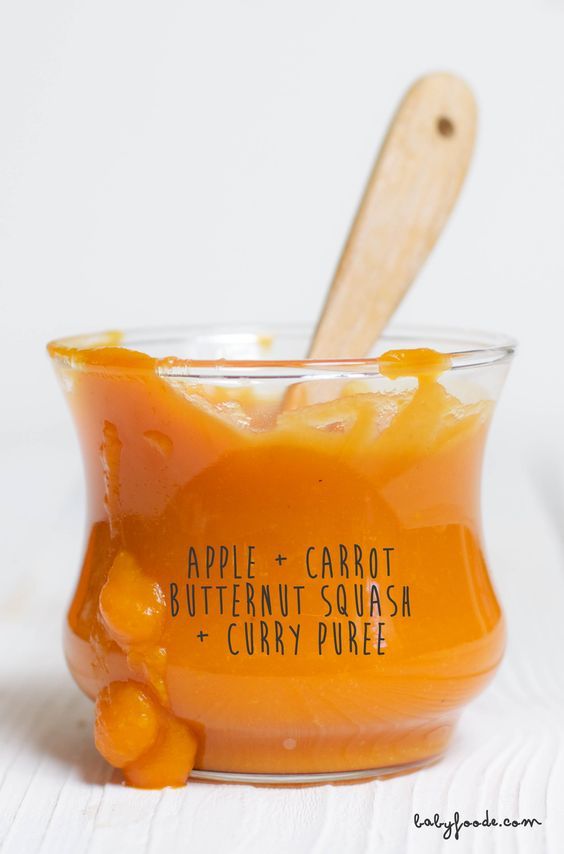 If you choose to take off the wrapper, there might be a little bit of adhesive left, so you might need some adhesive remover to get those last bits of stickiness off.
If you choose to take off the wrapper, there might be a little bit of adhesive left, so you might need some adhesive remover to get those last bits of stickiness off.
Now with your "naked" jars, you can number them with a permanent marker or get some colorful construction paper and make a new label for the jar with just the number.
For the game, your guests will get a blank numbered piece of paper and they will write their guesses that correspond to the number on the jar.
Baby Shower Game Set-up
To set-up the game, you will need some space where you can put out all the materials - jars of food, game sheets, pens, popsicle/spoons, wastebasket, etc... You should opt for a dedicated space so the stuff doesn't get mixed up with other things. A small table or countertop should be fine.
How to Play Name that Baby Food
There are a couple of ways that you can play the game. You can have the game be passive, meaning the guests can play it throughout the baby shower event and drop their answer sheets in a container and you can tally up the correct answers later and announce the winner. Or you can make the game a main event and ask for volunteers to play while the rest of the guests become the audience.
Or you can make the game a main event and ask for volunteers to play while the rest of the guests become the audience.
If you choose to play the game passively, you might consider having the instructions out on display so guests know what it's all about - the last thing you want is guests thinking you're serving appetizers!
If you are expecting guests of all ages to attend, then you might think twice about letting the game be passive - depending on the age of the kids, they may not quite understand the game and the results could be...messy.
The other way to play this game allows for everyone to enjoy the action. You'll need to carve out some time to play the game during the event. At the time, you can ask for volunteers who want to play - not everyone will feel comfortable tasting baby food in front of an audience, so asking for volunteer players will just make things easier.
Once you have the volunteers, have each of them taste one baby food at a time, then write down their guess.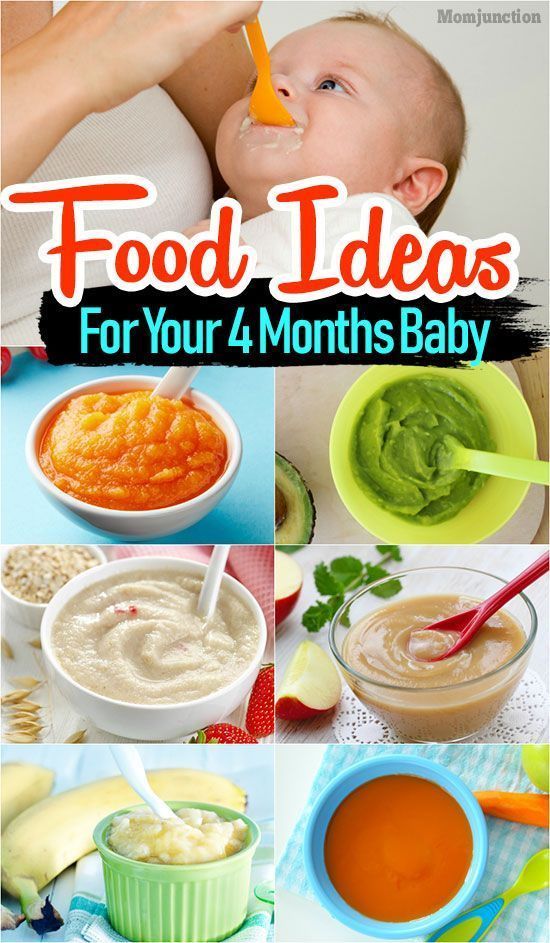 When they've had a chance to taste each one, you can announce the type of food, the person with the most correct wins!
When they've had a chance to taste each one, you can announce the type of food, the person with the most correct wins!
It may be more fun to play this game with an audience as everyone will be able to see the reactions of the players as they taste those mushy peas and squashed carrots. It will also be fun to announce the winner right away.
Baby Shower Game Prizes
For this game, you may want to prepare a few prizes just in case you have a tie. As the game is all about food (albeit baby food), it might be fun to have your prizes be food-related too.
Here are some food prize ideas that you might consider:
- Homemade Jars of Jam: If you love canning, then consider making some special treats for your winners. A cute label "Adult Food: Apricot Jam" or something that ties the prize back to the game can be a clever and memorable baby shower game prize. If you're not into making jam, then buying a few fun flavors and relabeling them with cute labels is an option.
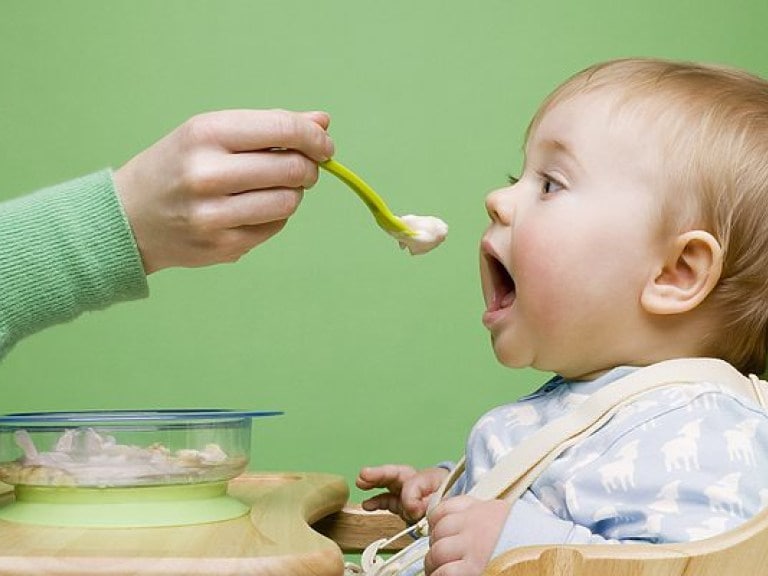
- Mason Jar Recipe Kits: A recipe in a jar prize is always fun and can be a play on the baby food jars. There are tons of recipe in a jar kits you can find online and if you think you might have more than one winner, then this is an easy prize to duplicate.
- Food Cooking Kits: As this baby shower game is all about flavor, consider some food kits for your winners so they can add more flavor to their next dish! A collection of exotic salts, a variety pack of BBQ sauces or salsas. Some nice oils or spice mixes can also work.
- DIY Food Gift Basket: A little themed food gift basket is another option. A small container filled with goodies for a movie night, breakfast in bed, or a picnic would make a great baby shower prize.
Related Articles
Baby Shower Ice Breaker Games
Are you expecting a lot of guests who may not know each other very well? Do the parents-to-be have multiple circles of friends they are inviting? Then consider having including an ice breaker game during your event.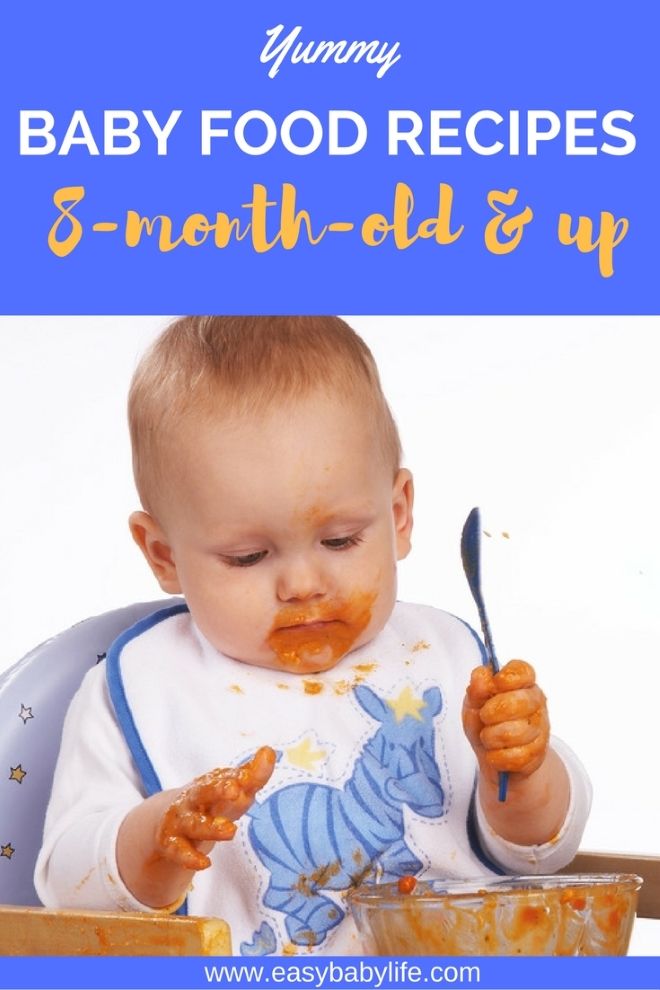 This will encourage people to get to know one another and be great if you are planning for some heavy participation in upcoming games (ahem, such as "Name that Baby Food"). The more comfortable your guests are with one another, then the more likely they will be want to play more game!
This will encourage people to get to know one another and be great if you are planning for some heavy participation in upcoming games (ahem, such as "Name that Baby Food"). The more comfortable your guests are with one another, then the more likely they will be want to play more game!
Keepsake Baby Shower Activities
Hosting a baby shower can be a lot of fun, especially when you're including some hilarious baby shower games to play. Aside from all the fun, you should also consider some activities that can be enjoyed by the parents-to-be long after the baby shower is over. Keepsake activities are a lovely way to encourage guests to leave something special for the new parents that they can treasure for a while.
How to Host a Diaper Raffle
Looking for a way to set the new parents up for a good while? Consider including a diaper raffle with your event. It will require you to announce the diaper raffle with the invites going out so your guests will know they can bring a pack of diapers to participate, but it'll be worth the effort!
Guess the Baby Food - Etsy.
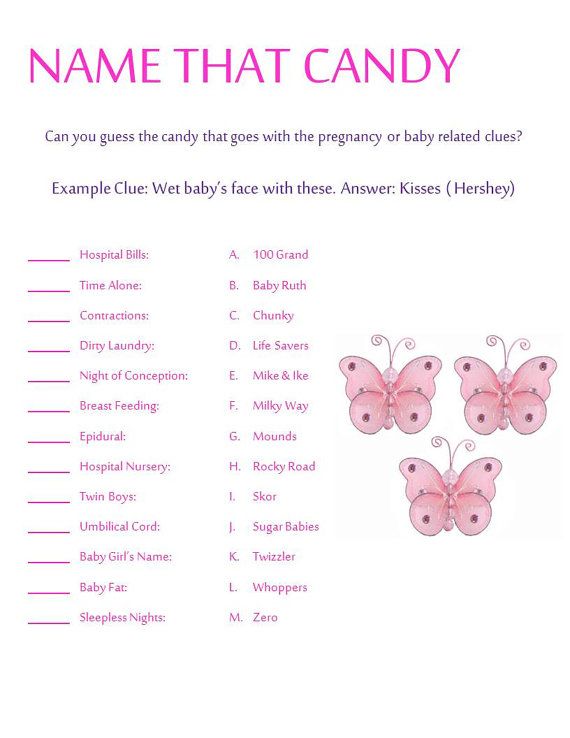 de
deEtsy is no longer supporting older versions of your web browser in order to ensure that user data remains secure. Please update to the latest version.
Take full advantage of our site features by enabling JavaScript.
Find something memorable, join a community doing good.
( 1,000+ relevant results, with Ads Sellers looking to grow their business and reach more interested buyers can use Etsy’s advertising platform to promote their items. You’ll see ad results based on factors like relevancy, and the amount sellers pay per click. Learn more. )
Canned food for baby food
Category: Baby food products
Canned food for baby food is produced from selected raw materials of certain grades under strict sanitary-hygienic, chemical-technological and microbiological control.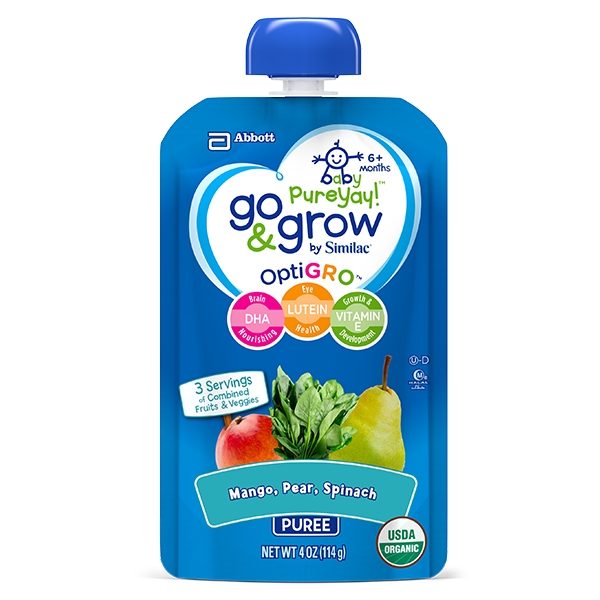 Special requirements are placed on technological equipment. It must be made of non-corrosive materials.
Special requirements are placed on technological equipment. It must be made of non-corrosive materials.
Canned baby food has a high nutritional value and provides year-round balanced nutrition for children of all age groups. Some types of canned food are rich in proteins. All of them contain a large amount of carbohydrates and a small amount of fiber. Many canned foods are a good source of vitamin C and β-carotene. In addition, canned baby food contains a sufficient amount of iron, phosphorus and calcium salts. The range of canned foods for baby and diet food entering the consumer market is quite wide and includes more than 200 items.
Canned vegetables, fruits, fruits and vegetables are prepared for children's nutrition, which must have excellent taste, the required calorie content, contain vitamins and ash elements (in particular, iron and phosphorus). In addition to the main raw materials of fresh fruits, berries, vegetables, cereals, meat, a complex of vitamins is introduced into their composition (C, B 1, B 2 , B 6 , PP, E).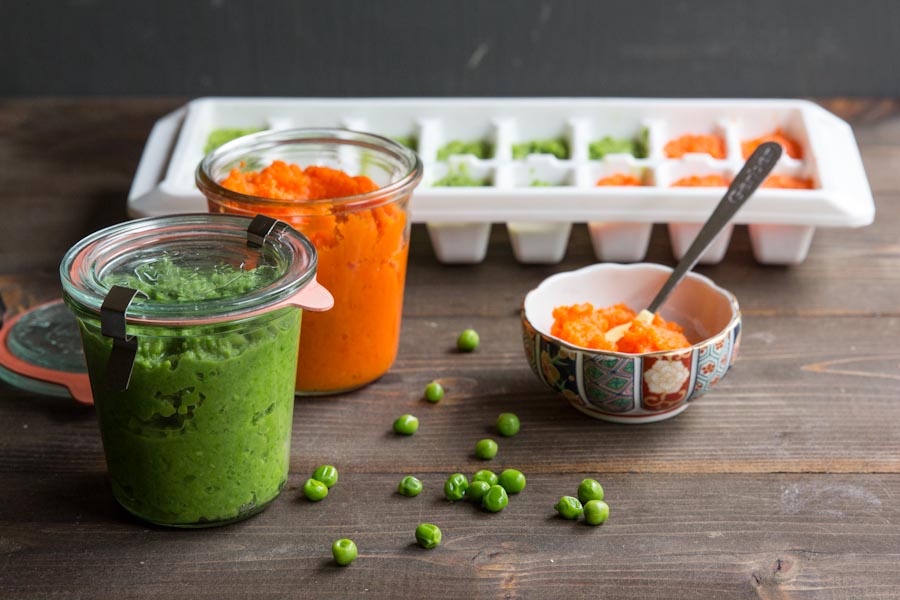 The most favorable ratio of proteins, fats and carbohydrates in food for children is 1:1:2. For children aged 2 to 5 months, fruit or vegetable juices or finely ground puree with a dispersion of 20-50 and not more than 100 microns are recommended. The fiber content in the product should not exceed 0.6%. Food particles for children from 8 months to 1 year can be larger - up to 2 mm, and older than 1 year - from 2 to 10 mm.
The most favorable ratio of proteins, fats and carbohydrates in food for children is 1:1:2. For children aged 2 to 5 months, fruit or vegetable juices or finely ground puree with a dispersion of 20-50 and not more than 100 microns are recommended. The fiber content in the product should not exceed 0.6%. Food particles for children from 8 months to 1 year can be larger - up to 2 mm, and older than 1 year - from 2 to 10 mm.
Canned food for baby food, although produced according to the usual technology, but at the same time more carefully control the quality of raw materials, strictly comply with technological standards, maintaining a high sanitary level of production. They are produced at specialized enterprises or in workshops that meet special requirements for technology and equipment.
Canned purees for children
These canned foods are produced in the following assortment:
- natural vegetable purees from green peas, carrots or pumpkins, as well as pureed tomatoes; vegetable natural purees with the addition of other components;
- various types of puree soups - vegetable, tomato, meat and vegetable, chicken with vegetables, liver with rice or potatoes. The raw materials for these canned food are cauliflower, pumpkin, green peas, zucchini, tomatoes. A set of vegetables and composition are set for each type of canned food separately. The same group of canned food includes mashed potatoes from spinach, pumpkin, zucchini, carrots, green peas, green beans, to which one of the following components is added: rice, semolina, milk;
The raw materials for these canned food are cauliflower, pumpkin, green peas, zucchini, tomatoes. A set of vegetables and composition are set for each type of canned food separately. The same group of canned food includes mashed potatoes from spinach, pumpkin, zucchini, carrots, green peas, green beans, to which one of the following components is added: rice, semolina, milk;
- fruit and berry purees from apples, apricots, black currants, blueberries, fresh plums, prunes with sugar;
- from a mixture of fruit and vegetable puree or juices.
Puree-like canned foods for children are produced on stainless steel mechanized lines. Raw materials used for the production of canned food are crushed into pieces 3-5 mm in size. In the process of processing, measures are taken to protect the semi-finished product from exposure to atmospheric oxygen. Products are packaged in glass or lacquered tin containers. Thus, the preservation of vitamins during the processing of raw materials is ensured and the transfer of heavy metals into canned food is excluded.
The production of canned food for baby food is made from high-quality specially selected varieties, absolutely fresh vegetables and fruits, quickly, in order to avoid contamination of the product with microorganisms. The equipment and pipelines through which the product is pumped are thoroughly cleaned and washed with hot water after completion of work. Before loading, the equipment is washed a second time.
Factors that form the quality of canned baby food
Formation of the quality of canned baby food is formed at all stages of the technological process.
Pureed preserves include preparation of raw materials, boiling and mashing, homogenization, deaeration, packing, capping and sterilization.
Preparation of raw materials
Fruits and vegetables are sorted, washed, inspected and rinsed in the shower. These operations are carried out in the same way as in the production of other types of canned food, but they are distinguished by the thoroughness of their implementation.
Potatoes are peeled and cut into circles or cubes. Root vegetables and onions are peeled and chopped. For the first dinner dishes, carrots are pre-blanched with steam. When preserved in sour cream sauce, chopped carrots are stewed in melted cow butter, adding sugar syrup.
The squash is de-stalked and skinned and cut. The pumpkin is cleaned of seeds and inner film and cut into pieces. Pedicels and integumentary leaves are removed from cauliflower, and sashes are removed from green peas. The beets are boiled for 25-50 minutes at 120°C, peeled and ground on a top.
Meat carcasses are toileted. Then the meat is rolled, trimmed, cut into pieces weighing 50-100 g and crushed on a top.
The liver is trimmed, soaked for 2 hours in cold running water, cut into pieces of 150-200 g each and the carcasses are blanched.
Chickens are singeed, gutted, washed, wings, legs, heads and necks are separated, and then the butchered chicken carcasses are boiled for 30-60 minutes. After that, the fillet is separated, which is crushed on a top, getting minced meat. Boiled vegetables are added to the minced meat and the mixture is rubbed.
After that, the fillet is separated, which is crushed on a top, getting minced meat. Boiled vegetables are added to the minced meat and the mixture is rubbed.
Sugar, salt, flour, rice are passed through a magnet. Rice is cleaned, inspected, washed and boiled. The flour is sifted and dried. Sugar and salt are dissolved in boiling water, the solutions are filtered. The milk is filtered and heated. Butter is melted and filtered. Semolina is sifted and subjected to magnetic separation, the tomato paste is passed through the finisher and diluted with water to a concentration of 12% solids. Prepared raw materials are served for boiling and rubbing.
Boiling and mixing components
To facilitate the rubbing of fruits, vegetables, meat, they are pre-boiled with bubbling steam. When heated, the protopectin of vegetable raw materials turns into pectin, and the fabric softens. Boiling is carried out in hermetically sealed apparatus equipped with a screw-type mixer.
At start-up, a steam curtain is created in the apparatus to expel the air. This ensures the preservation of vitamins of fruits and vegetables during processing, and also protects the product from darkening. After the air is forced out through the hatch located on the cover of the apparatus, the prepared raw materials are loaded, then the hatch is hermetically closed. In order to avoid its deformation, the stirrer is not turned on immediately, but 5-10 minutes after the start of the process, when the raw material fabric has time to soften.
This ensures the preservation of vitamins of fruits and vegetables during processing, and also protects the product from darkening. After the air is forced out through the hatch located on the cover of the apparatus, the prepared raw materials are loaded, then the hatch is hermetically closed. In order to avoid its deformation, the stirrer is not turned on immediately, but 5-10 minutes after the start of the process, when the raw material fabric has time to soften.
The cooking temperature is set taking into account the density of the fabric of the raw material and acidity. Acid promotes the hydrolysis of protopectin, accelerating the digestion. Fruits, berries, tomatoes, zucchini, spinach, sorrel, as well as a mixture of vegetables with liquid components and minced meat with broth are boiled at a temperature of 100 ° C, pumpkin, green peas, cauliflower - at 105 ° C, chopped carrots and a mixture of vegetables - at 110°C, beets, potatoes, a mixture of vegetables with meat - at 120°C.
The duration of the cooking process for different types of raw materials is different and ranges from 5 to 50 minutes. During boiling, the product is diluted with condensate. The amount of condensate depends on the type of raw material and the duration of the scalding process and ranges from 16 to 25% by weight. Dilution is a long periodical process.
Condensation formed during the processing of fruits, vegetables, meat with live steam dilutes the product that has to be boiled. Prolonged heating of the product worsens its quality, therefore, instead of boiling, grinding and heating at a temperature of 90-100°C for vegetables and 70-80°C for fruits are also used. Liquid components (milk, broth, brine, sugar syrup, tomato puree, milk with pureed semolina, flour, rice) are added to the main product using dosing pumps and rubbed after mixing. The mashed mass is pumped into a hermetically sealed collector-heater, which is equipped with a stirrer for mixing canned food components.
Mass homogenization
The puree obtained after the masher has a coarse fibrous structure. The particle size of the fabric depends on the type of product and on the diameter of the holes in the sieves of the wiping machines and is 150-550 microns after the first wipe, and 50-250 microns after the finisher.
To give the product finer grinding, which improves taste, the mashed mass is homogenized, bringing the product dispersion to 20-30 microns. Such a product is well absorbed by the child's body, has a homogeneous, creamy consistency and does not delaminate during storage of canned food.
Deaeration
Puree-like canned food for children is deaerated by keeping the mass in a vacuum apparatus for 10-20 minutes. At the same time, steam is fed into the heating chamber of the vacuum apparatus. In this case, the product boils, together with water vapor, from 65 to 93% of the air contained in it is removed. After deaeration, the vacuum is broken due to the release of juice vapors, the temperature of the mass is brought to 80°C. In the product treated in this way, no more than 1% of air by volume remains.
In the product treated in this way, no more than 1% of air by volume remains.
Filling, sealing and sterilization
Before packaging, the product is heated to a temperature of 70°C in continuously operating heat exchangers or in batch heaters.
Packing is made from a closed preheater equipped with a stirrer. The temperature required for packing the product (70°C) is maintained in the collector. Puree is packaged in glass or lacquered tins (0.1-0.2 l), or tubes using automatic fillers.
The filled container is immediately rolled up and then sterilized: fruit or berry puree at 100°C (from blackcurrant - at 85°C), the same puree with the addition of cereals and milk - at 110-120°C, fruit and vegetable, vegetable, meat and vegetable puree - at 120 ° C. The duration of the actual sterilization, depending on the type of product and container, ranges from 10 to 60 minutes. After sterilization, canned food is cooled.
Canned food from coarsely chopped vegetables
Production of canned foods from coarsely chopped vegetables for baby food is similar to the production of puree products, but differs in the size of vegetable pieces (5-10 mm). In addition, for children over 1.5 years old, canned food is prepared such as lunch dishes - the first (vegetable soups, green cabbage soup) and the second (vegetable stew, meat with vegetables, etc.).
In addition, for children over 1.5 years old, canned food is prepared such as lunch dishes - the first (vegetable soups, green cabbage soup) and the second (vegetable stew, meat with vegetables, etc.).
For children over 1.5 years of age, food in a mushy state is recommended, containing pieces sized 2-4 mm (from 1.5 to 4 years) and 5-10 mm (from 4 to 7 years). A technology has been developed for such canned food from certain types of vegetables (green peas, carrots or a mixture of these vegetables in sour cream sauce) and berries (strawberries in sour cream sauce, cranberry or sugar syrup).
Green peas prepared according to the usual scheme are packed in jars, poured with sauce, rolled up and sterilized. To prepare sour cream sauce, browned flour is mixed with sour cream, adding water, the mixture is added to a boiling sugar-salt solution, butter is added, boiled, and then the finished sauce is filtered.
Carrots are peeled, washed, scalded, cut into cubes, and then stewed, after adding butter and sugar-salt solution.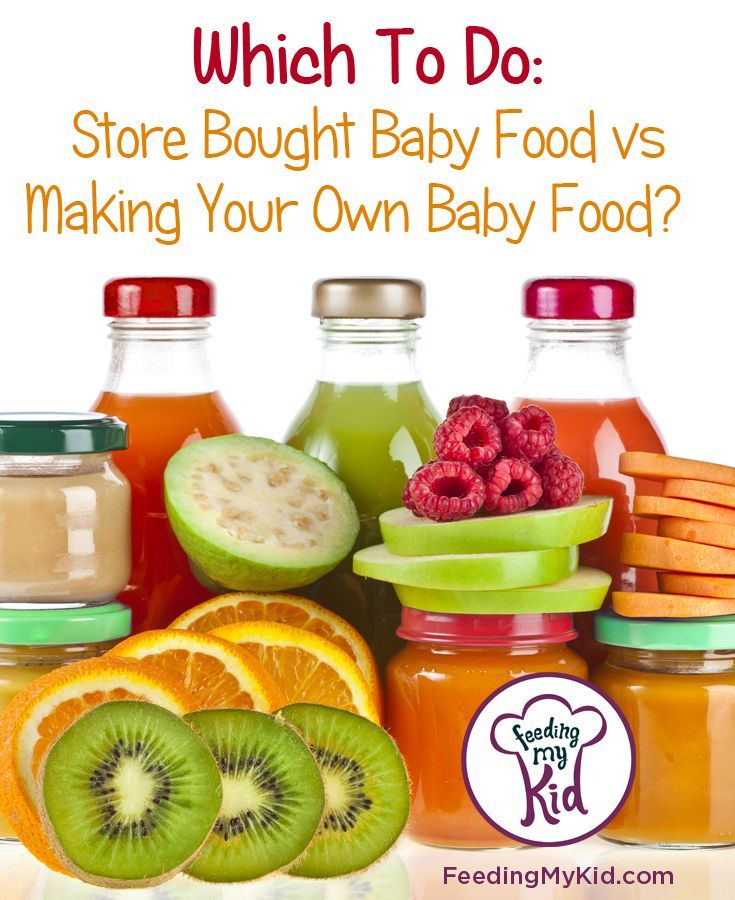 The product is packaged in jars, poured with tomato sauce and preserved.
The product is packaged in jars, poured with tomato sauce and preserved.
The strawberries are washed, peeled, placed in jars, filled with syrup and subjected to the usual processing. Cranberry syrup, due to its high acidity, helps preserve the intense color of canned food. When using sugar syrup, citric acid is added to it.
Quality requirements for canned food for baby food
In terms of organoleptic characteristics, canned vegetables, fruits and vegetables, vegetable and meat for baby food must meet the following requirements.
Appearance and consistency for vegetable, vegetable and fruit purees, vegetable purees with the addition of other components, homogenized vegetable and meat purees - a homogeneous finely ground puree-like mass, mashed - a homogeneous puree-like mass.
Spreading the puree on a flat surface creates a lumpy or spreading mass.
Liquid and fat exfoliation is allowed during storage of canned food.
For vegetable and vegetable-fruit juices - a homogeneous, opaque liquid mass with an evenly distributed homogenized pulp.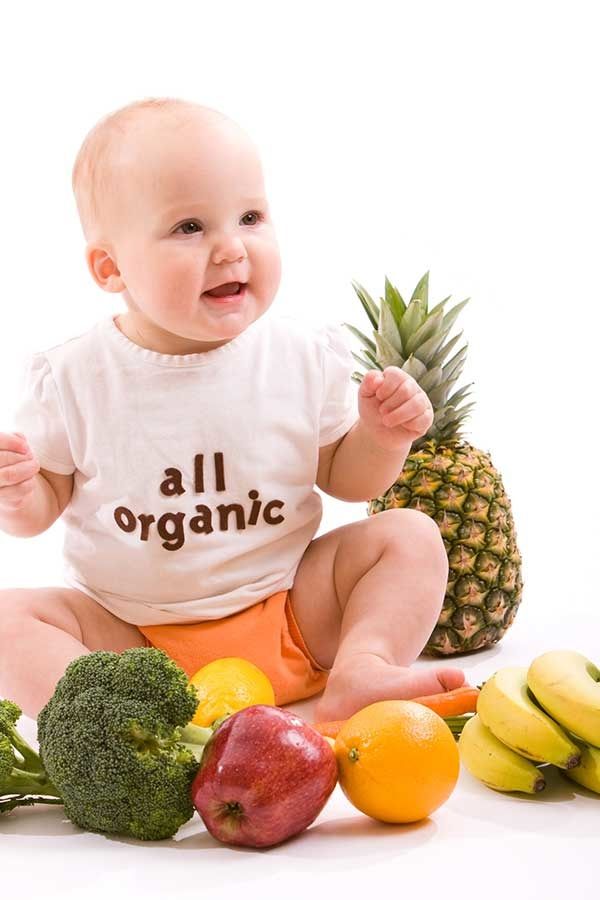
Liquid flaking is allowed during storage of canned food.
For all types of canned food, single dot inclusions of a dark color are allowed, during storage - precipitation of a light color.
Taste and smell are natural, well expressed, characteristic of this type of product. Extraneous smell and taste are not allowed. For canned carrots and liver, natural bitterness is allowed.
Uniform color throughout the mass, characteristic of canned vegetables or a mixture of vegetables, fruits and berries.
For canned food with added dairy products - lighter.
Canned food "Puree from zucchini and apples "Rassvet" may have a pink color. Slight darkening of the surface layer or side surface of the contents of cans is allowed.
 Extraneous taste and smell are not allowed
Extraneous taste and smell are not allowed Characteristics of canned food
| Indicator | Canned food | |||||
| Vegetable soup with green peas | Vegetable soup with cauliflower | Green cabbage soup | Spinach with meat | Vegetable soup with meat and potatoes | Vegetable soup with meat | |
| Appearance | Mix of vegetable pieces in filling | Chopped vegetable mix with potato pieces | Mixture of minced vegetables and meat | Mixture of vegetable pieces and minced meat in broth | ||
| Chopped vegetables in bulk in the form of pieces | ||||||
| Taste and smell | Natural, characteristic of culinary preparations of the same name. Foreign taste and smell are not allowed Foreign taste and smell are not allowed | |||||
| Color | Natural, characteristic of culinary preparations of the same name. Slight darkening of the surface layer or side surface of the contents of the cans is allowed | |||||
| Consistency | Vegetables and meat are soft. Single pieces of boiled vegetables are allowed | |||||
Characteristics of canned food
| Indicator | Canned food | ||||||
| Green peas in sour cream sauce | Carrots in sour cream sauce | Carrots with green peas in sour cream sauce | Meat with vegetables | Vegetable stew in tomato sauce | Vegetable stew with meat in white sauce | Liver with vegetables in sour cream sauce | |
| Appearance | Peas in sour cream sauce | Carrot pieces in sour cream sauce | A mixture of peas with carrot pieces in sour cream sauce | Mixture of cereals, minced meat and vegetable pieces | Mix of vegetable pieces in tomato sauce | Mixture of vegetable pieces and minced meat in white sauce | A mixture of vegetable pieces and chopped liver in sour cream sauce |
| Chopped vegetables in bulk in the form of pieces | |||||||
| Taste and smell | Natural, characteristic of culinary preparations of the same name.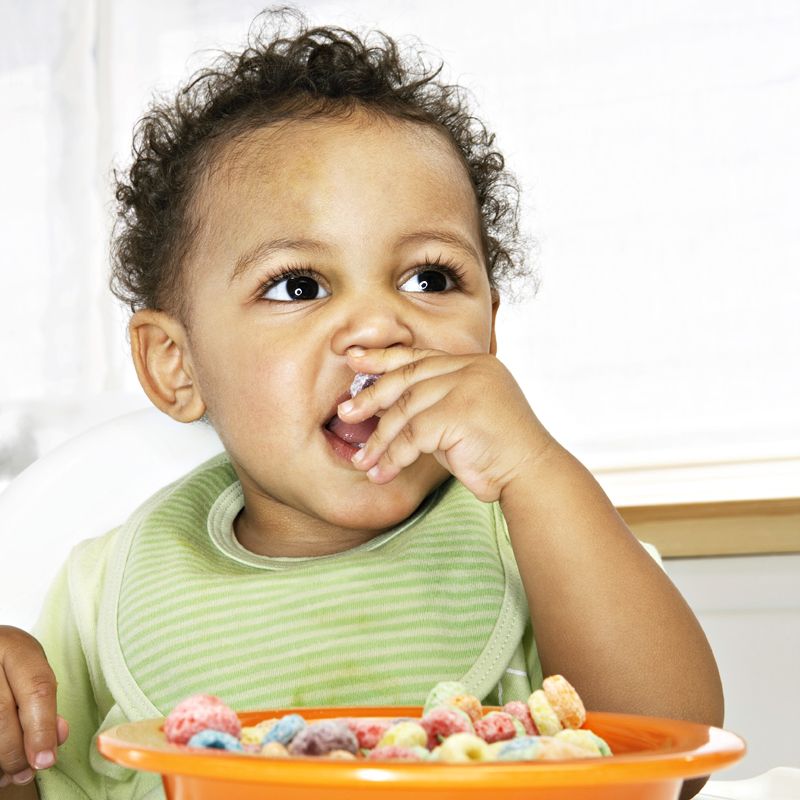 Foreign taste and smell are not allowed Foreign taste and smell are not allowed | ||||||
| Color | Natural, characteristic of culinary preparations of the same name. A slight darkening of the surface layer of the contents of the cans is allowed | ||||||
| Consistency | Vegetables, meat, liver, cereals are soft. Single pieces of boiled vegetables are allowed | ||||||
In comparison with other types of canned food, canned food for children has the highest safety indicators.
According to physical and chemical indicators, canned food must comply with the following standards, depending on the type of product.
Mass fraction of solids from 5% in vegetable puree soup "Autumn" to 23% in liver puree with potatoes.
In fruit and vegetable juices from 5% in tomato-apple to 17% in carrot-cranberry. In vegetable juices from 5% in tomato "Solnyshko" to 14% in pumpkin.
In canned vegetables and meat and vegetables from 10% in vegetable marrow sauce to 17% in green peas with rice and carrots. In canned vegetables and fruits from 10% in carrots with apple puree to 11% in carrots with apricot puree. In the first lunch courses from 14% in vegetable soup with cauliflower to 17% in spinach with meat, vegetable soup with meat and potatoes. In the second dinner courses from 16% in carrots in sour cream sauce to 22% in vegetable stew with meat in tomato sauce.
In canned vegetables and fruits from 10% in carrots with apple puree to 11% in carrots with apricot puree. In the first lunch courses from 14% in vegetable soup with cauliflower to 17% in spinach with meat, vegetable soup with meat and potatoes. In the second dinner courses from 16% in carrots in sour cream sauce to 22% in vegetable stew with meat in tomato sauce.
In canned food with the addition of vitamins from 5% in tomato juice "Solnyshko" with vitamin C, zucchini puree with vitamin C up to 2D% in carrot or pumpkin and sea buckthorn puree with vitamin C.
Mass fraction of chlorides in puree soups and puree from 0.3% to 0.6%.
In canned vegetable and vegetable-meat from 0.5% in spinach with meat and potatoes, green peas with rice and carrots up to
0.8% in vegetable marrow sauce. In the first dinner courses from 0.8 to 1.2%. In the second dinner courses from 0.4 to 0.7%.
In canned food with the addition of vitamins from 0.4 to 0.6% in squash caviar with vitamin C.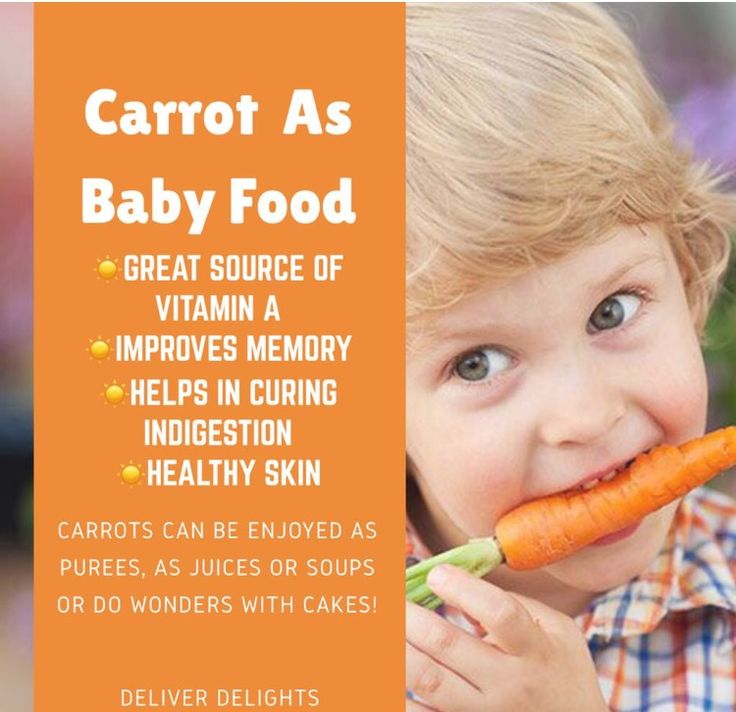
Mass fraction of fat from 1% in vegetable soup puree "Autumn" to 6% in liver puree with carrots "Alenka" ".
In canned vegetable and vegetable-meat from 2.0% in spinach with meat and potatoes, green peas with rice and carrots to 3.5% in vegetable marrow sauce. In the first dinner courses from 3 to 5%. In the second dinner courses from 3 to 4%.
In canned food with the addition of vitamins at least 4% in squash caviar with vitamin C.
Mass fraction of carotene from 0.0005% in zucchini puree with carrots, meat and vegetable puree with tomato, meat and vegetable puree with zucchini, liver soup, chicken puree with vegetables up to 0.005 % in carrot puree.
In vegetable and fruit juices from 0.0015% in carrot and tangerine to 0.0025% in carrot and apple, carrot and grape, carrot and fruit juices. In vegetable juices from 0.002% in pumpkin to 0.0025% in carrot juice.
In canned vegetable and vegetable-meat not less than 0.0010% in green peas with rice and carrots and vegetable marrow sauce. In canned vegetables and fruits from 0.0020% in carrots with apple puree to 0.0030% in carrots with apricot puree. In the first dinner courses, at least 0.0005%. In the second lunch courses from 0.0005% in vegetable stew with meat in tomato sauce, vegetable stew with meat in white sauce, liver with vegetables in sour cream sauce, meat with vegetables up to 0.0030% in carrots in sour cream sauce.
In canned vegetables and fruits from 0.0020% in carrots with apple puree to 0.0030% in carrots with apricot puree. In the first dinner courses, at least 0.0005%. In the second lunch courses from 0.0005% in vegetable stew with meat in tomato sauce, vegetable stew with meat in white sauce, liver with vegetables in sour cream sauce, meat with vegetables up to 0.0030% in carrots in sour cream sauce.
In canned food with added vitamins from 0.0007% in carrot or pumpkin and sea-buckthorn puree with vitamin C to 0.0025% in carrot-apple juice with vitamin C, carrot-grape juice with vitamin C, carrot-fruit juice with vitamin C , carrots with vitamin C.
Mass fraction of sugars not less than 7% in beetroot juice.
Mass fraction of pulp in fruit and vegetable juices from 20% in carrot-mandarin juice to 35% in carrot-apple, carrot-grape, carrot-cranberry, carrot-lingonberry, carrot-fruit, pumpkin-apricot juices. In vegetable juices from 30% in pumpkin to 35% in carrot juice.
In canned food with added vitamins from 30% in pumpkin juice with vitamin C to 35% in carrot-apple juice with vitamin C, carrot-grape juice with vitamin C, carrot-fruit juice with vitamin C, carrot juice with vitamin C.
Bulk the share of titratable acids in vegetable and fruit juices from 0.8% in carrot-tangerine to 0.4% in carrot-apple, carrot-grape. In vegetable juices from 0.3 to 0.6% in tomato "Sun".
In the first dinner courses from 0.15% in vegetable soup with green peas, in vegetable soup with cauliflower up to 0.4% in green cabbage soup. In the second dinner courses from 0.1% in green peas in sour cream sauce to 0.30% in vegetable stew with meat in tomato sauce, in liver with vegetables in tomato sauce, in meat with vegetables.
In canned food with added vitamins from 0.3% in tomato juice "Solnyshko" with vitamin C to 0.7% in carrot and fruit juice with vitamin C, carrot or pumpkin and sea buckthorn puree with vitamin C.
Mass fraction vitamin C in canned food with the addition of vitamins from 0.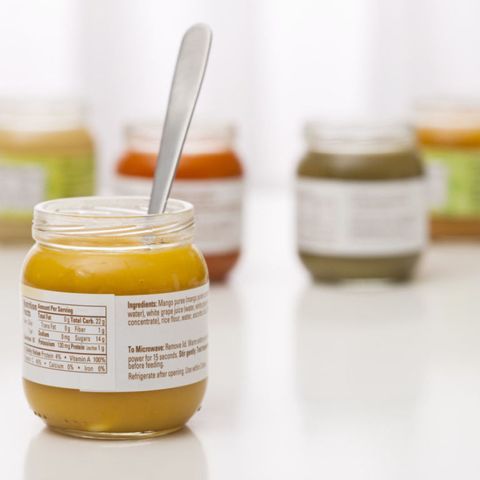 020% in carrot and apple juice with vitamin C, carrot and grape with vitamin C, carrot and fruit with vitamin C, carrot with vitamin C, carrot or pumpkin and sea buckthorn puree with vitamin C up to 0.050 % in pumpkin juice with vitamin C.
020% in carrot and apple juice with vitamin C, carrot and grape with vitamin C, carrot and fruit with vitamin C, carrot with vitamin C, carrot or pumpkin and sea buckthorn puree with vitamin C up to 0.050 % in pumpkin juice with vitamin C.
Mass fraction of protein in vegetable and meat purees from 3.0% in liver puree to 7.0% in liver puree with rice, liver puree with potatoes.
In canned vegetables and vegetables and meat in spinach with meat and potatoes, not less than 3.0%. In the first lunch courses from 3.0% in vegetable soup with meat and potatoes, vegetable soup with meat up to 4.0% in spinach with meat. In the second lunch courses from 3.0% in vegetable stew with meat in tomato sauce, vegetable stew with meat in white sauce, liver with vegetables in sour cream sauce to 4.0% in meat with vegetables.
Storage
Shelf life of canned food: 2 years in glass containers and 1 year in metal containers from the date of production. The shelf life of canned food made with the addition of vitamins, milk, cream, sour cream is 1 year from the date of production.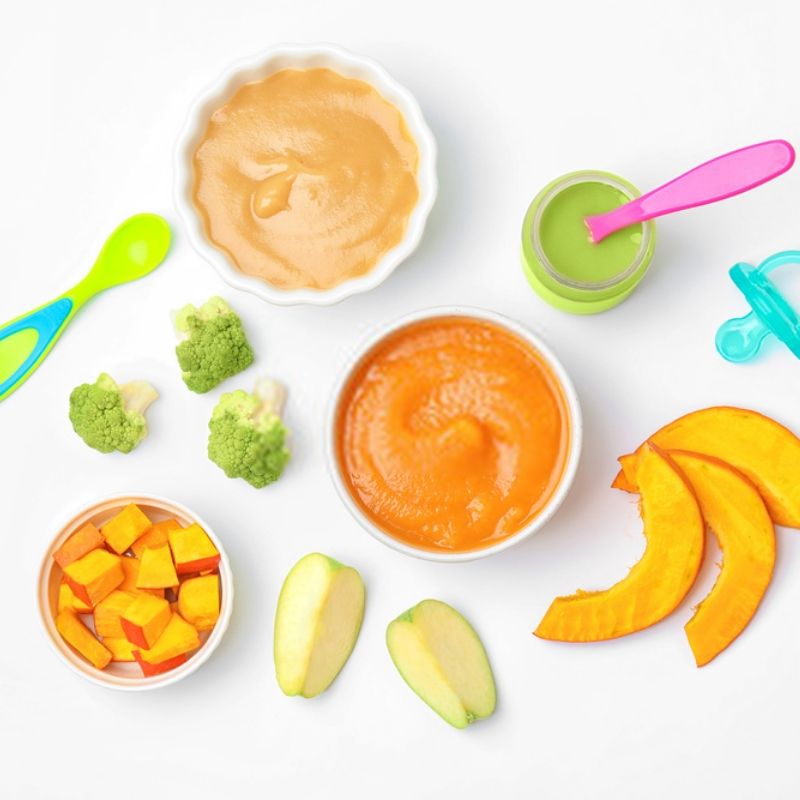
Safety indicators of canned vegetables and fruits and vegetables for baby food puree) for baby food, the following requirements for safety and nutritional value are provided (table).
Nutritional value (per 100 g of product)
| Criteria and indicators | Units | Permissible levels | Note | |
| normalized | marked | |||
| Mass fraction of solids | g | 5-20 | + | |
| g, not less than | 11 | + | For juices and purees | |
| Total acidity | %, not more than | 0. | - | |
| Carbohydrates | g | 5-25 | + | |
| including mono- and disaccharides | g | 5-25 | - | |
| Proteins | g, not less than | 0.5 | For fruit and milk and fruit and grain purees | |
| Mass fraction of ethyl alcohol | %, not more than | 0.2 | - | For fruit juices and purees |
| Minerals: | ||||
| potassium | mg | 70-300 | + | |
| sodium | mg, max | 200 | - | |
| iron | mg | 1. | + | For enriched products |
| Vitamins: | ||||
| ascorbic acid (C) | mg | 15.0-50.0 | + | For fortified drinks |
| β-carotene | mg | 1-4 | + | The same |
In terms of safety, toxic elements, mg/kg, not more than: lead - 0.3, arsenic - 0.2, cadmium - 0.02, mercury - 0.01.
Mycotoxins, mg/kg, not more than: patulin is not allowed (<0.02, for those containing apples, tomatoes, sea buckthorn), deoxynivalenol is not allowed (<0.05 for fruit and grain purees containing wheat, barley flour), zearalenone not allowed (<0.005 for fruit and grain purees containing wheat, corn, barley flour), aflatoxin not allowed (<0.00002 for fruit and milk purees), aflatoxin B 1 not allowed (< 0.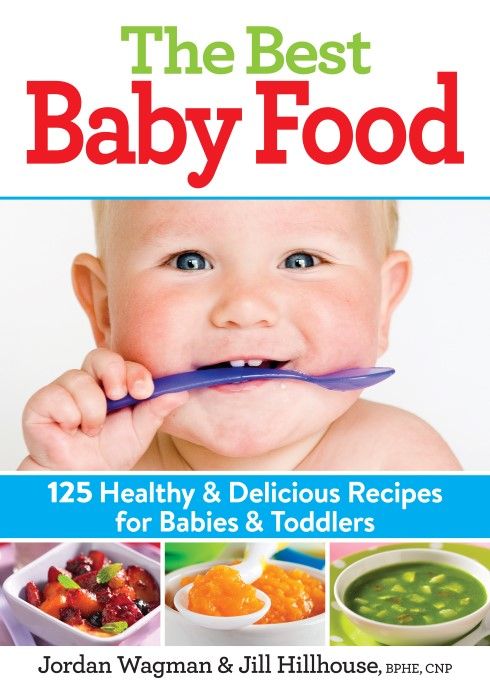 00015 for fruit and grain purees).
00015 for fruit and grain purees).
Pesticides, mg/kg, max: hexachlorocyclohexane (α, β, γ-isomers) - 0.01, DDT and its metabolites - 0.005, nitrates - 50 on a fruit basis, 200 - on a vegetable and fruit and vegetable basis, as well as for containing bananas.
Radionuclides, Bq/kg: cesium-137 - 60, strontium-90 - 25.
Microbiological indicators must meet the requirements of industrial sterility for the relevant groups of canned food in accordance with SanPiN.
Main food groups and their importance in nutrition
A person eats a variety of foods that he needs for growth, movement, and health. To grow, you need protein, fats; carbohydrates are needed to move and maintain body temperature, calcium and phosphorus are needed for healthy bones and teeth. For health - vitamins. Where are these substances located?
Several main groups of food products can be distinguished: meat and meat products; fish and fish products; eggs; milk and dairy products; bread and bakery products, cereals, pasta; legumes; vegetables, fruits and berries; nuts and mushrooms; confectionery; dietary fats; beverages.
Meat and meat products. This product group includes beef, lamb, pork, poultry (chicken, chicken, turkey), rabbit, and various types of sausages, sausages, sausages and sausages. What all these products have in common is their high content of protein, iron and vitamin B 12 . At the same time, the proteins of meat and meat products are of high quality. That is why meat is recommended to be included in the daily diet of children. But sausages, sausages and sausages contain much more fat and salt than meat. In their manufacture, a number of food additives are used. Pork and especially lamb also contain more fat than beef, and they are dominated by indigestible (refractory) fat. The proportion of fat in chicken meat is usually lower than in beef and especially pork and lamb. Therefore, poultry and beef dishes should prevail in the diet of schoolchildren, while lamb, pork, sausages, sausages and sausages should be used in a limited way - no more than 1-2 times a week.
Fish and fish products. The nutritional value of fish and fish products is close to that of meat. This group is also an important source of high quality protein, easily digestible iron and vitamin B 12 . Moreover, since fish has less connective tissue than meat, fish and its proteins are more easily digested and absorbed by children and adolescents. This is one of the reasons that fish dishes are recommended in the evening, and not meat dishes: the stomach and intestines should also rest at night, and not be engaged in the digestion of food. Despite the noted similarity in the chemical composition of fish and meat, the former contains some nutrients that are absent in meat. This is primarily the trace element "iodine". Fish are richer than meat in vitamins PP and B 6 .
Chicken eggs are the third important source of protein in human nutrition. But, in addition to protein, this product contains many other useful substances: fat, vitamins A, B 12 . At the same time, all the nutrients of the egg are quickly and well absorbed. Therefore, eggs are good for children, unless, of course, they cause allergies (which happens often). However, do not get carried away with eggs. Good "golden mean" - 1-2 eggs a day, no more than 2-3 times a week.
At the same time, all the nutrients of the egg are quickly and well absorbed. Therefore, eggs are good for children, unless, of course, they cause allergies (which happens often). However, do not get carried away with eggs. Good "golden mean" - 1-2 eggs a day, no more than 2-3 times a week.
The next group of products are close "relatives" of the first three groups. We are talking about milk and dairy products, which are related to meat and fish by the presence of high-quality protein in them. But protein is not the only advantage of this group of products. You get calcium and vitamin B 2 mainly from milk and dairy products. On the day you should drink at least two glasses of milk or kefir. The content of calcium and vitamin B 2 is even higher in products such as cottage cheese and cheese, which are "natural concentrates" of these substances.
Calcium is especially necessary for children and adolescents, since during this period there is an intensive formation of bones and teeth, requiring significant amounts of calcium
The important role of fermented milk products (kefir, fermented baked milk, yogurt, curdled milk, etc.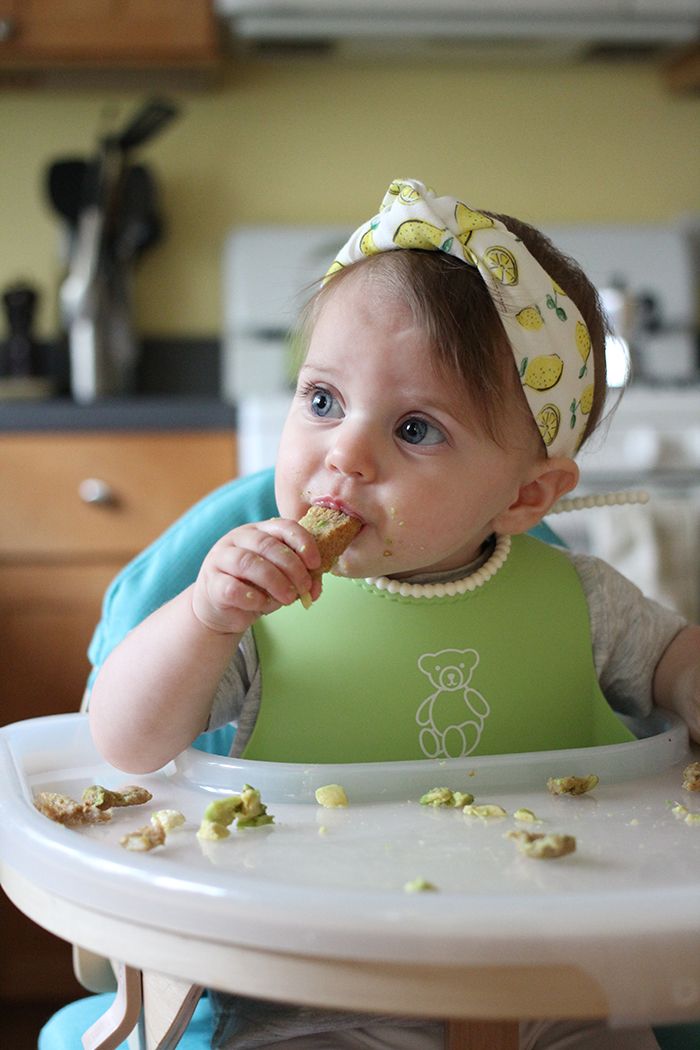 ) should be emphasized. These drinks not only contain the listed nutritional substances (protein, Ca, vitamin B 2 , etc.), but also carry beneficial microorganisms that “support life”, which are very beneficial for the body
) should be emphasized. These drinks not only contain the listed nutritional substances (protein, Ca, vitamin B 2 , etc.), but also carry beneficial microorganisms that “support life”, which are very beneficial for the body
Bread and bakery products, cereals, pasta. Both bread and cereals can serve as a source of almost all basic nutrients - protein, fat, carbohydrates, some vitamins (B, B 2 , PP), mineral salts (magnesium, iron, selenium, etc.). They contain vegetable fibers necessary for the normal functioning of the intestines and the biliary system. However, these products are dominated by carbohydrates (mainly starch), while the protein and fat content is significantly lower. Moreover, bread proteins are characterized by a significantly lower biological value than proteins from meat, fish, and dairy products. Therefore, bread and cereals should be combined in the diet with meat, fish, milk and other animal products. The traditional passion for bread, cereals, pasta and noodles, unfortunately, quite often present in the diet, of course, cannot be considered useful, as it is accompanied by excess weight. The range of bread, cereals, pasta is very wide. Preference should be given to bread made from wholemeal flour (rye, wholemeal), as it has a higher content of vegetable fibers, vitamins B, B 2 , PP. Among cereals, buckwheat and oatmeal should be ranked first in terms of nutritional value, which contain more nutrients (proteins, fats, carbohydrates, vitamins, mineral salts) than other cereals. The nutritional value of semolina is lower than that of buckwheat and oatmeal. However, its taste qualities allow it to take its rightful place among other cereals.
The range of bread, cereals, pasta is very wide. Preference should be given to bread made from wholemeal flour (rye, wholemeal), as it has a higher content of vegetable fibers, vitamins B, B 2 , PP. Among cereals, buckwheat and oatmeal should be ranked first in terms of nutritional value, which contain more nutrients (proteins, fats, carbohydrates, vitamins, mineral salts) than other cereals. The nutritional value of semolina is lower than that of buckwheat and oatmeal. However, its taste qualities allow it to take its rightful place among other cereals.
Vegetables and fruits are important sources of a number of mineral salts (potassium, iron), sugars, vegetable fibers, organic acids that improve the digestion process, some vitamins, in particular vitamin C. Both vegetables and fruits are most useful fresh, since any kind of cooking reduces the content of vitamins in them, primarily C.
At the same time, vegetables and fruits are also useful in the form of various dishes, as well as juices, the nutritional value of which is very high.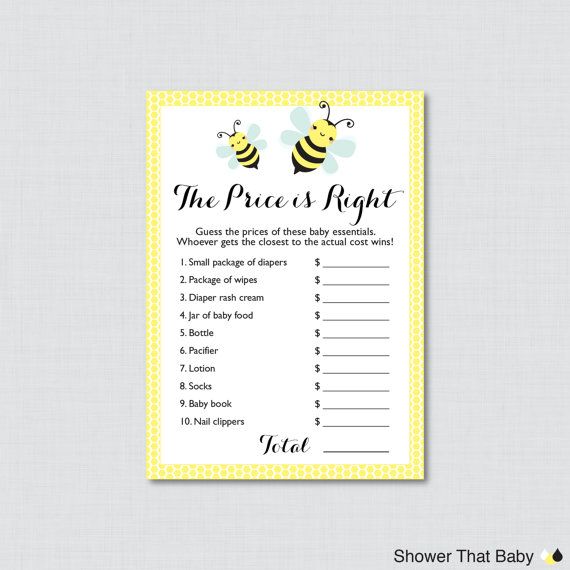 Vegetables (carrots, beets, cabbage, tomatoes, cucumbers) are widely used in the preparation of salads, vinaigrettes, first courses (borscht, cabbage soup), and fruits and berries - in the preparation of compotes, jelly.
Vegetables (carrots, beets, cabbage, tomatoes, cucumbers) are widely used in the preparation of salads, vinaigrettes, first courses (borscht, cabbage soup), and fruits and berries - in the preparation of compotes, jelly.
Confectionery. E This group of foods serves mainly as a source of carbohydrates and energy. Given your high physical activity and the high energy consumption associated with this, confectionery cannot be considered unnecessary for children. In addition, nutrition cannot be considered only as a process of supplying nutrients to the body. Food is also a source of joy, positive emotions, and confectionery products in this regard bring a lot of pleasure to children of all ages
Edible fats. This group of products includes fats of animal origin - butter, cream, animal fats (beef, mutton) and vegetable oils (sunflower, corn, soybean, olive, etc.), as well as margarines. These products are needed both as a source of vitamins A, E, D, and as necessary components in the formation of the taste and aroma of dishes in the process of their preparation.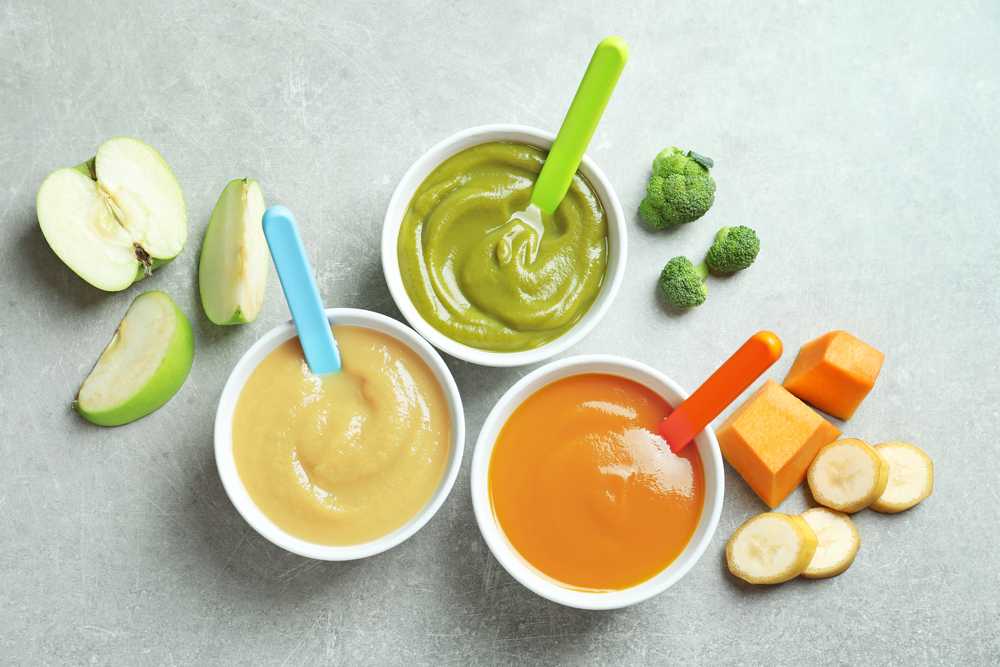
In order for food to be beneficial, it is necessary to follow the rules of a healthy diet.
- Food should be varied (plant and animal).
- Normal weight must be maintained.
- Eat more fruits and vegetables.
- Less sweet, salty, smoked, carbonated drinks.
- Do not eat unwashed vegetables, fruits and berries.
- Observe the diet.
An excess of carbohydrates, especially sugars, can also lead to overweight. Therefore, sweets, chocolate, cakes, etc. should be present in the diet of schoolchildren, but in reasonable quantities. Sugar is one of the important reasons for the development of caries, which, in turn, can lead to diseases of the joints, kidneys, etc. Sugar and sweets increase the incidence of caries especially significantly if children eat them not after taking the main dishes, but between meals. food when tooth enamel is not protected from sugar by other nutrients
G.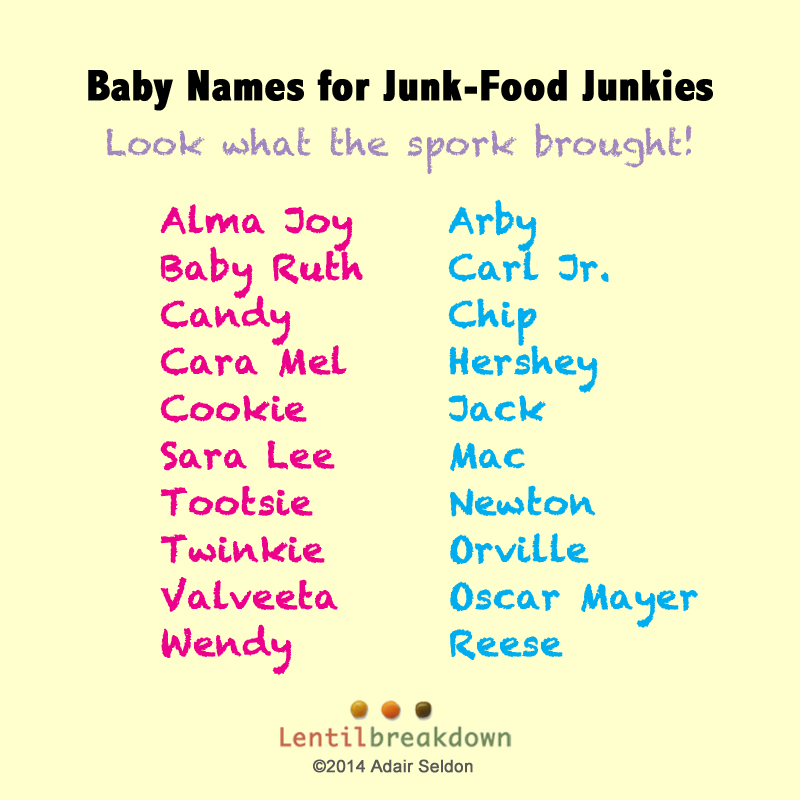

 8
8 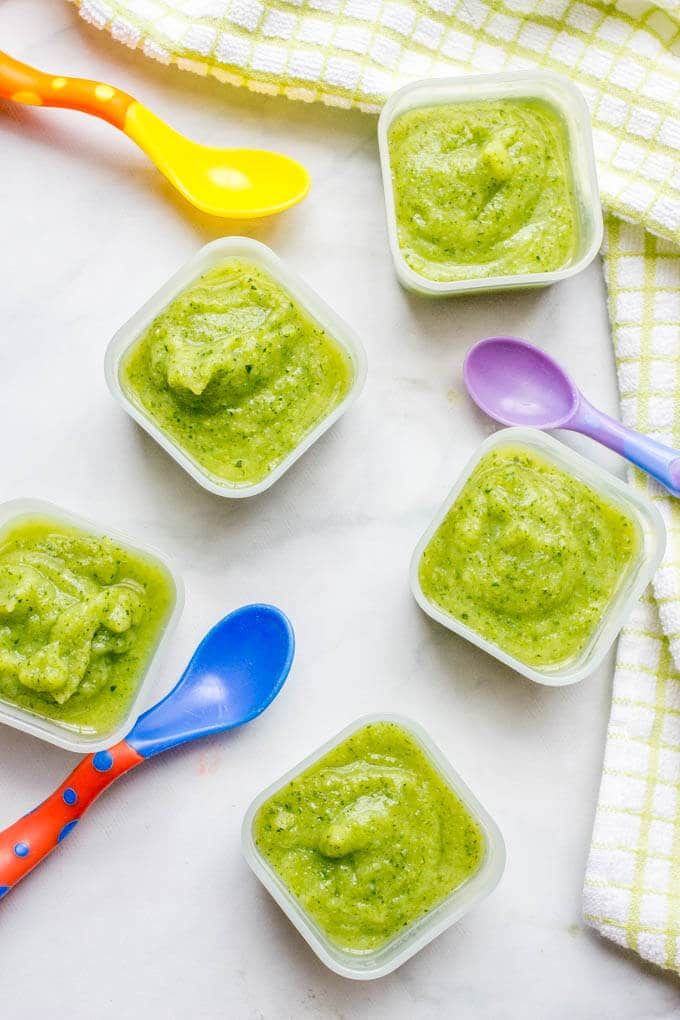 0-3.0
0-3.0 




